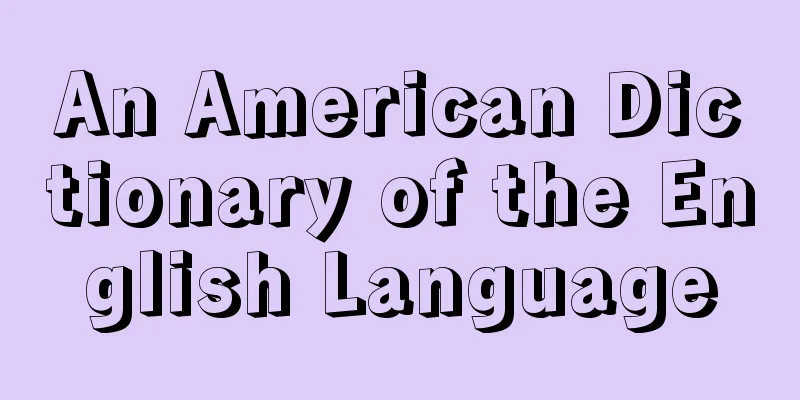Public assistance - public assistance

|
A system whereby the national and local governments guarantee a minimum standard of living for people who have fallen into poverty. The term "public assistance" was first legally established in 1929 in the UK, when the Local Government Amendment Act established the Public Assistance Board, which was the institution that managed the Poor Law. This was followed by the US Social Security Act in 1935, which focused on public assistance. Public assistance, which spread in this way, was positioned as one of the two wheels of a car along with social insurance during the establishment of the social security system. In other words, unlike the former Poor Law, it clarified the public (mainly local government) responsibility for assistance based on the idea of the right to life. However, since it was accompanied by a means test (obligation to support, asset utilization, utilization of other laws and policies, maintenance of minimum living expenses, income certification) to confirm the needs (need for protection) of those in poverty, many people involved in the anti-unemployment struggle and labor movement in the UK in 1935 opposed it, saying that the means test was an invasion of privacy and did not guarantee human rights. The Leninist concept of social security (1917) did not include a public assistance plan, but the Vienna Platform for Social Security adopted by the World Confederation of Trade Unions in 1953 and the Social Security Charter decided at the 5th World Confederation of Trade Unions Congress (Moscow) in 1961 state that "wherever public assistance systems exist for people in areas not covered by social security, such systems should be gradually replaced by social security systems" (Social Security Principle 4). In that sense, the fundamental contradiction in the public assistance system is the guarantee of rights and the asset investigation, and it is expected that in the future it will change into social assistance (a form of forming a social consumption fund). In fact, the plan for the public assistance system in the Beveridge Plan in the UK was a "national assistance" under state responsibility, and was considered unavoidable as a residual system for special needs that were not compatible with uniform administration such as social insurance, due to the immaturity of the social security system centered on social insurance, and was thought to gradually decrease. However, after World War II, the social assistance system was expanded in the UK through the Family Allowances Act and the National Health Service Act, but the expansion of military forces through the European Recovery Plan (Marshall Plan) in 1950 brought about a reduction in social security costs. From the beginning, the standard amount of the National Assistance Act was higher than the old-age pension amount based on the National Insurance Act by the amount of rent, resulting in the unusual phenomenon that those who contributed received lower benefits than those who did not contribute. In 1960, the government tried to overcome this by introducing corporate pensions, and in 1966, with the establishment of the Ministry of Social Security, the name of the assistance in the National Assistance Law was changed to subsidized pensions and subsidized benefits, in an attempt to promote the receipt of national assistance among the elderly (about two-thirds) who were eligible but refrained from receiving it because they disliked the image of assistance. However, the normal amount of benefits, where the contributory pension is higher than the national assistance benefit, has not been achieved. The same is true in Japan, where the minimum wage system in particular has not functioned effectively, resulting in the opposite phenomenon and the number of public assistance recipients continuing to increase. This is also cited as the reason for today's third (some say fourth) protection tightening policy. Whether the public assistance system will become social assistance with stronger rights, or whether it will become a poor law system with stronger asset testing, depends entirely on the formation of a sense of the right to life among each and every citizen. [Kyuichi Shirasawa] "Public Assistance" by Ogura Joji (Minerva Publishing, Social Work Paperbacks)" ▽ "Public Assistance Theory" by Kagoyama Kyo (1978, Koseikan)" ▽ "Basic Theory of Public Assistance Labor" by Shirasawa Hisakazu (1982, Keiso Shobo) [Reference item] |Source: Shogakukan Encyclopedia Nipponica About Encyclopedia Nipponica Information | Legend |
|
貧困に陥った人々に対し、国と地方自治体が最低限度の生活を保障する制度。公的扶助という用語が法的に定着をみるのは、1929年イギリスで、地方自治改正法によって、それまでの救貧法を運営する機関が、「公的扶助委員会」として成立してからである。続いて1935年、公的扶助を中心とするアメリカの社会保障法が成立した。こうして普及してきた公的扶助は、社会保障制度成立期に、社会保険とともに車の両輪の一つとして位置づけられた。つまり、かつての救貧法とは違って、生存権思想を中心にして扶助の公的(主として自治体)責任を明らかにしたものである。しかし、生活困窮者のニード(要保護性)確認のための資産調査means test(扶養義務、資産活用、他法・他施策活用、最低生活費の維持、収入認定)を伴っていたので、1935年当時のイギリスの失業反対闘争や多くの労働運動関係者は、資産調査がプライバシーの侵害となり、人権保障にはならない制度であると反対した。レーニン型の社会保障理念(1917)では公的扶助プランはなく、1953年に採択された世界労働組合連盟の「社会保障ウィーン綱領」や、61年の世界労連第5回大会(モスクワ)決定の「社会保障憲章」では、「社会保障が適用されない分野の人々のために、公的扶助制度がある所では、どこでもこのような制度を漸次社会保障制度に取り替えてゆかねばならない」(社会保障の原則4)と述べられている。 その意味では、公的扶助制度の基本矛盾は権利性の保障と資産調査であり、今後は社会扶助(社会的消費ファンド形成への一形態)へと変化していくものと思われる。事実、イギリスのビバリッジ計画での公的扶助制度のプランは、国家責任による「国家扶助」として、社会保険を中心にした社会保障制度の未成熟ゆえに、また、社会保険などの画一的行政になじまない特別なニードに対して残余の制度としてやむをえないものとされ、だんだん減少していくものと考えられていた。しかし、第二次世界大戦後に、家族手当法、国民保健サービス法などによる社会扶助制度の拡大がイギリスで行われたが、1950年のヨーロッパ復興計画(マーシャル・プラン)による軍備拡大は社会保障費の削減をもたらした。そもそも成立時より国家扶助法基準額が国民保険法に基づく老齢年金額よりも家賃分だけ高くなっており、拠出した者が拠出しない者より給付額が低いという珍現象が生じた。1960年にこれを克服する意味で企業年金の導入を図り、66年には社会保障省成立により、国家扶助法の扶助名を補助年金、補助給付と名称変更し、本来は受給しうるのに扶助イメージを嫌ってがまんしている老人たち(約3分の2)に、国家扶助受給の促進を図ろうとした。しかし、国家扶助給付金よりも拠出年金のほうが高いという正常な給付額は未達成である。日本でも同じであり、とくに最低賃金制が実質上の機能を果たしていないので逆現象となり、ますます公的扶助受給者は増加し続けている。それが今日の第三次(ある人は第四次とも)保護引締め政策の理由にもされている。 公的扶助制度が権利性強化へと向かって社会扶助化するのか、逆に資産調査が強化されて救貧法化されるのかは、ひとえに国民ひとりひとりの生存権意識の形成にかかっている。 [白沢久一] 『小倉襄二著『公的扶助』(ミネルヴァ書房・社会事業新書)』▽『籠山京著『公的扶助論』(1978・光生館)』▽『白沢久一著『公的扶助労働の基礎理論』(1982・勁草書房)』 [参照項目] |出典 小学館 日本大百科全書(ニッポニカ)日本大百科全書(ニッポニカ)について 情報 | 凡例 |
Recommend
Bongos
...A type of percussion instrument that is widely...
American Trypanosomiasis
...African sleeping sickness is transmitted by ts...
Tropopause
The boundary between the upper end of the troposph...
Nidulariaceae
...A small but unusual mushroom belonging to the ...
Pillbug (Pill Bug) - Pillbug (English spelling)
Also known as the pillbug (illustration). A small ...
Cutaneo‐viscera reflex
When a certain kind of stimulus is applied to the ...
Varanus griseus (English spelling) Varanus griseus
… [Takahiro Matsui]. … *Some of the terminology t...
Doctor of the Five Classics - Gokyohakushi
An official position in the Western Han Dynasty of...
Ayutthaya Dynasty - Ayutthayacho (English spelling)
A Thai dynasty (1351-1767) with its capital in Ay...
National cargo ship
In the Middle Ages, especially from the Northern a...
Shorinzan Kofun
This keyhole-shaped tumulus from the early II per...
Microbial leaching
...The main microorganisms used are bacteria such...
Large shield - Otate
〘Noun〙 A large shield. ※The Chronicles (720), Nove...
Tang Zǐ (English: Tang Zǐ)
A building for worshiping gods unique to the Qing ...
Horus - Horus (English spelling)
An ancient Egyptian male god in the form of a haw...

![Anatahan [island] - Anatahan](/upload/images/67cad6a1c5735.webp)







